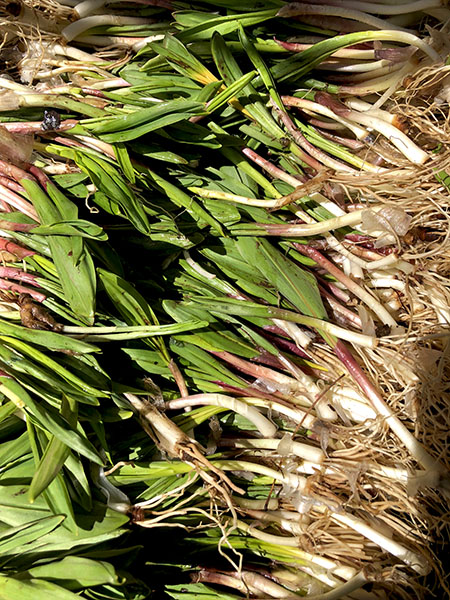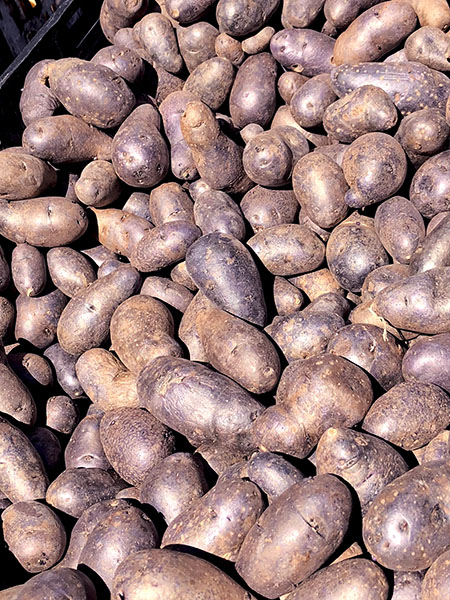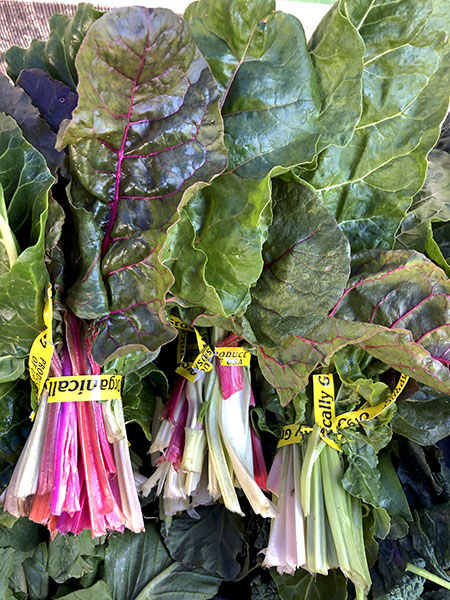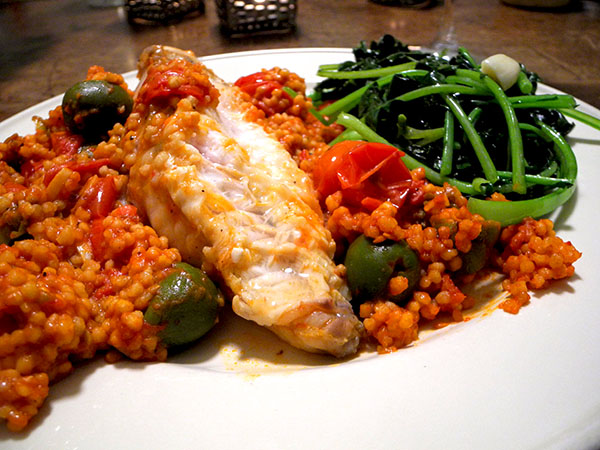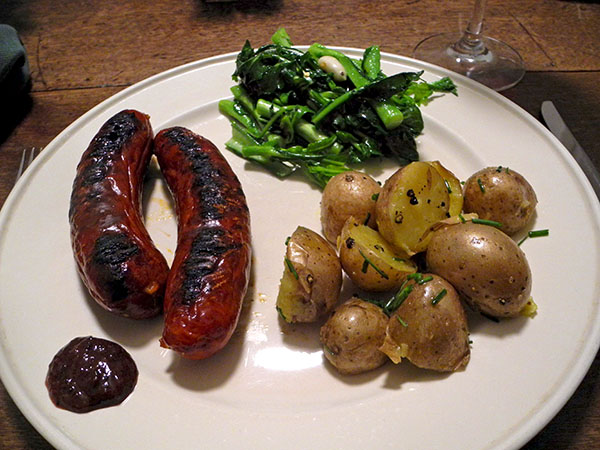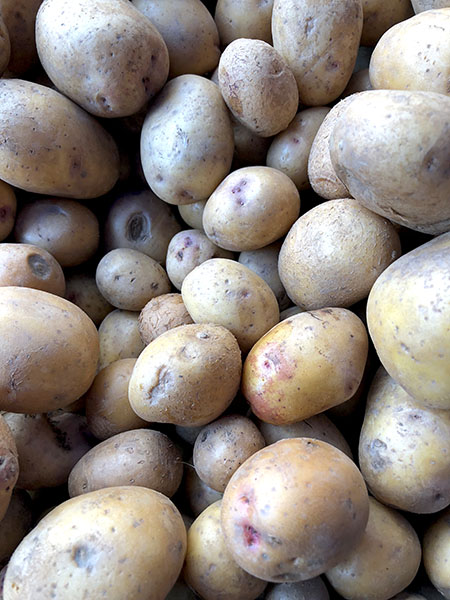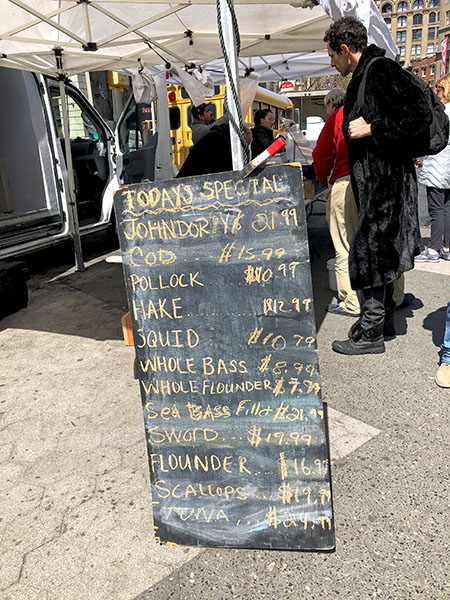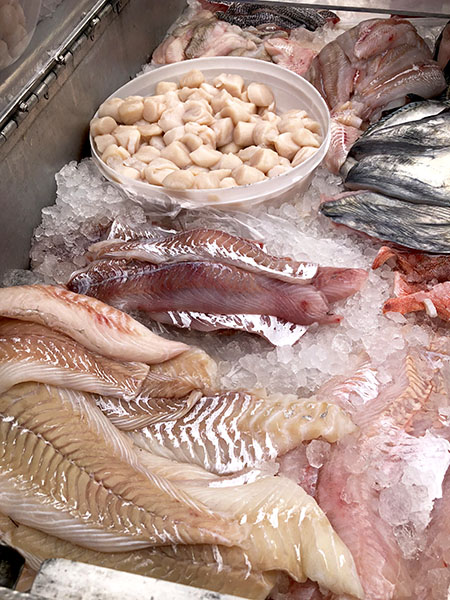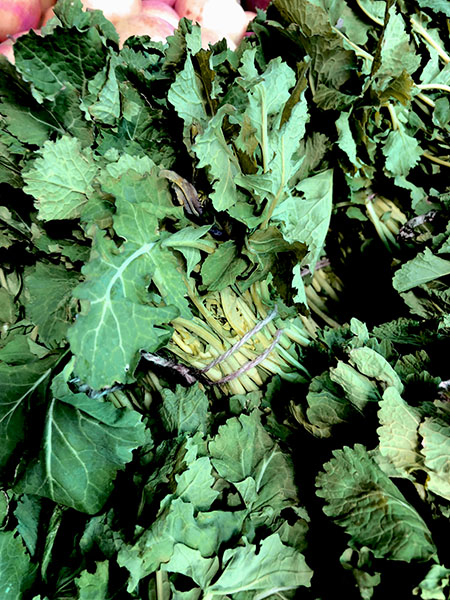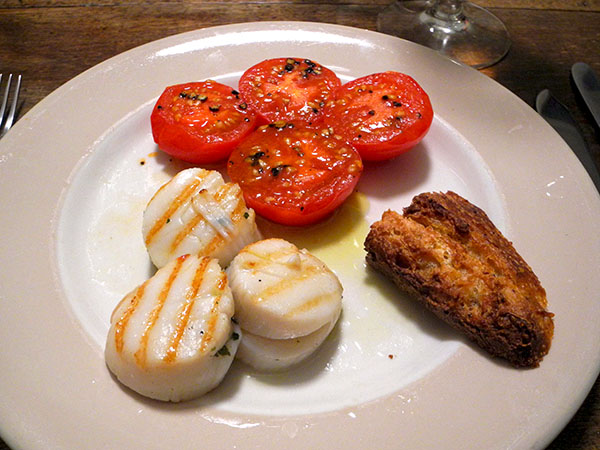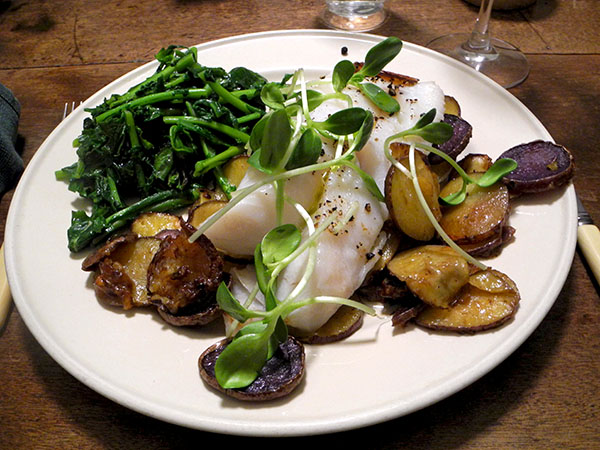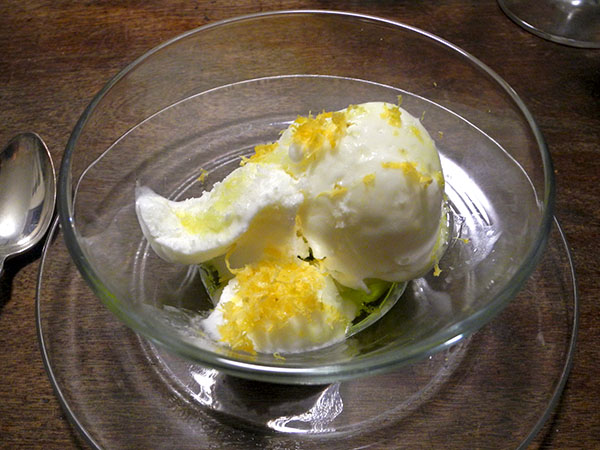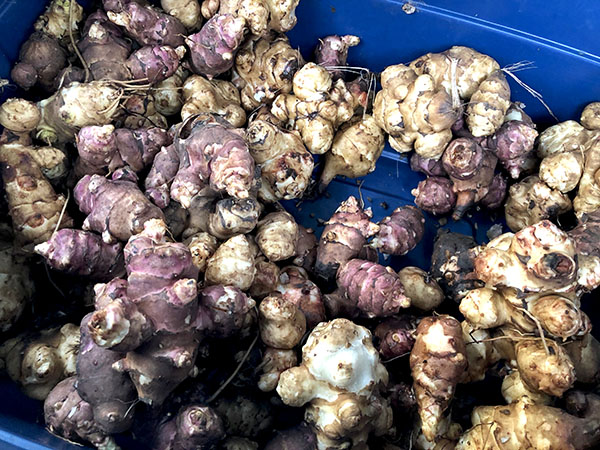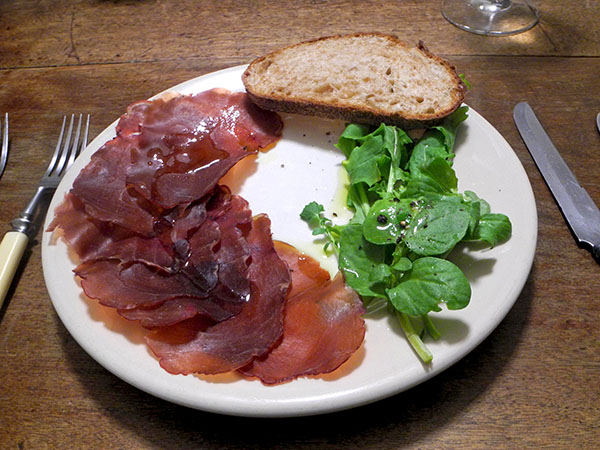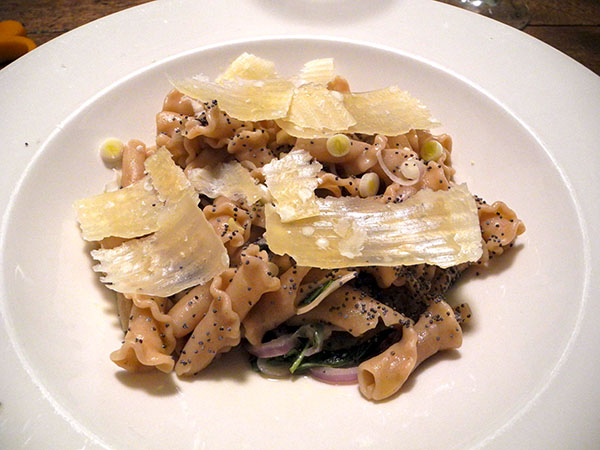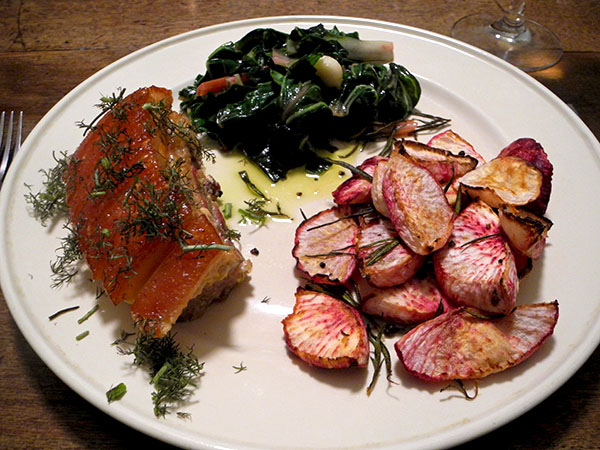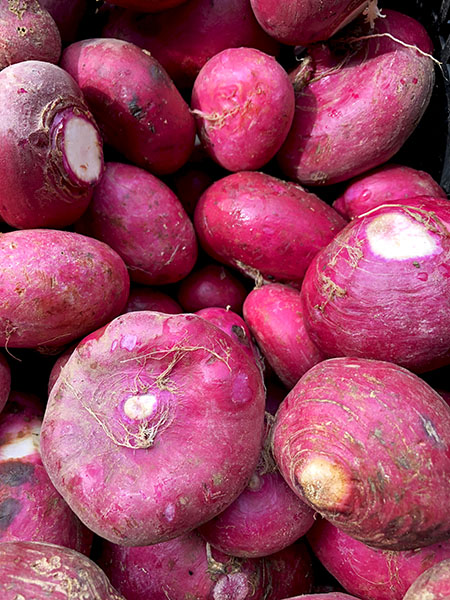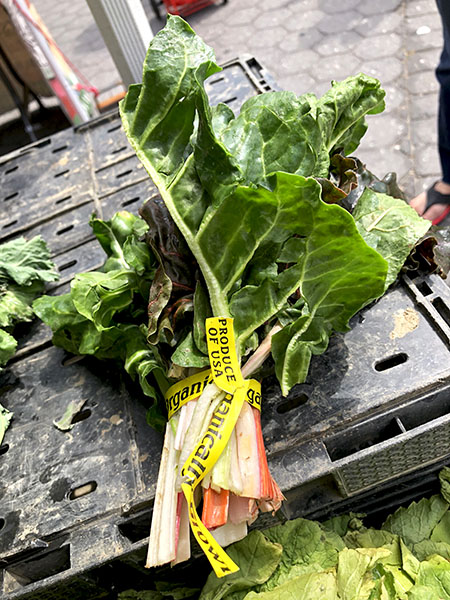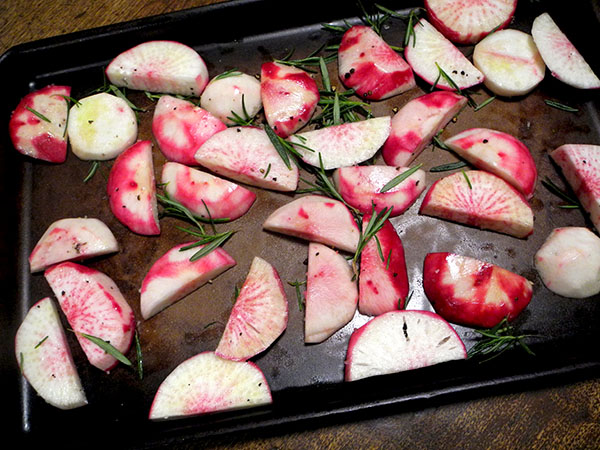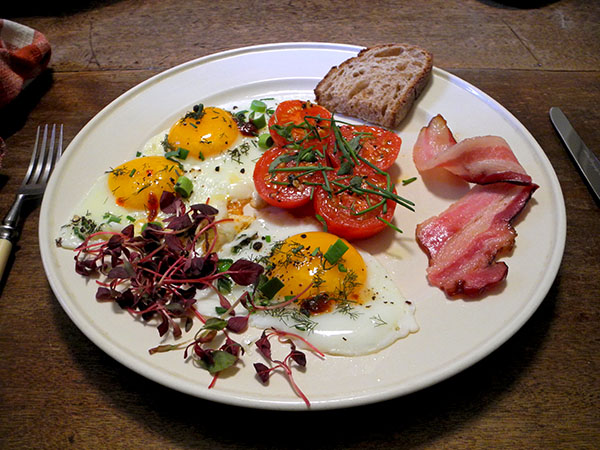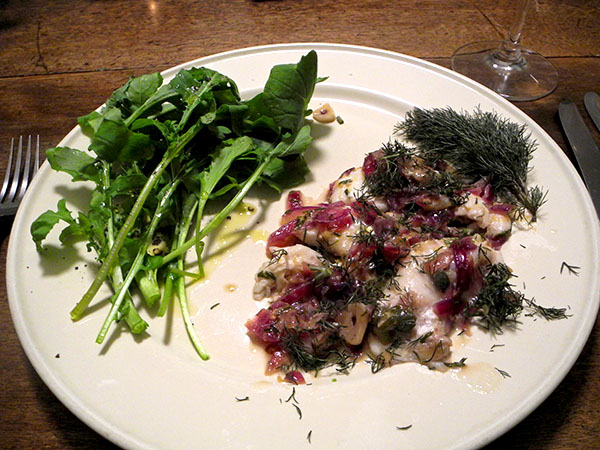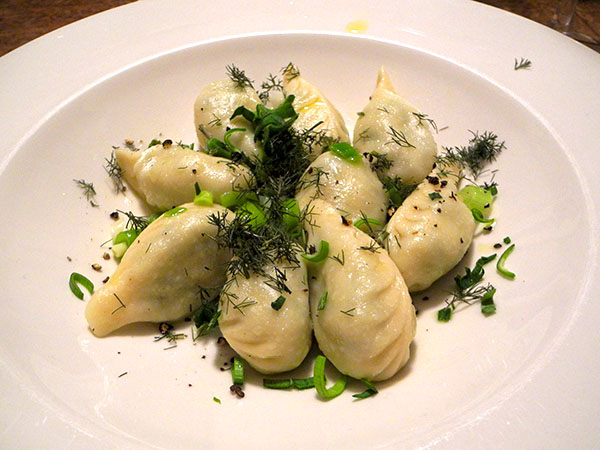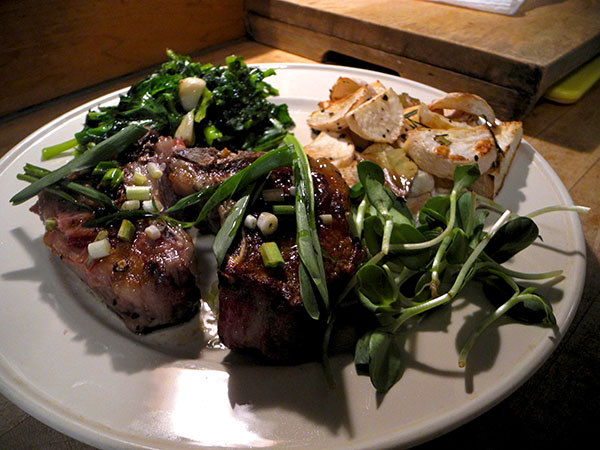
It was one of our anniversaries. Actually, It was the meal which celebrated the anniversary that had we really marked a few days earlier.
We ate in the raised ‘gallery’ above the living room, as we do for special occasions, including any more formal meal with guests. While we don’t usually play music when we’re dining with friends, on Sunday night we were alone, and we listened to our song (or at least most of it), ‘Tristan und Isolde‘, in a historical, and really great recording. The music came from speakers slightly below us, in the larger room, which has windows fronting on the street (a venue that can sometimes rival the volume – and interest – of what we may be playing).
But last night, in my imagination, we were dining inside the private foyer of our own loge at the Vienna State Opera.
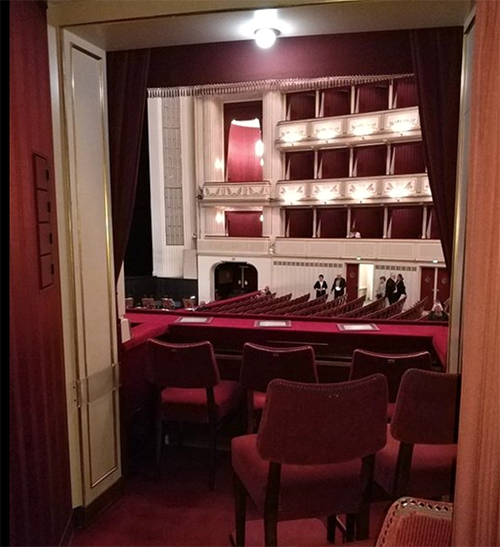
That one is not ours. Although our foyer is larger, our opera house is much smaller than the Wiener Staatsoper. The windows were mostly closed that night, so the street precincts beyond, which can contribute a broader tonal collage of (found) sounds, were not a factor on this night.
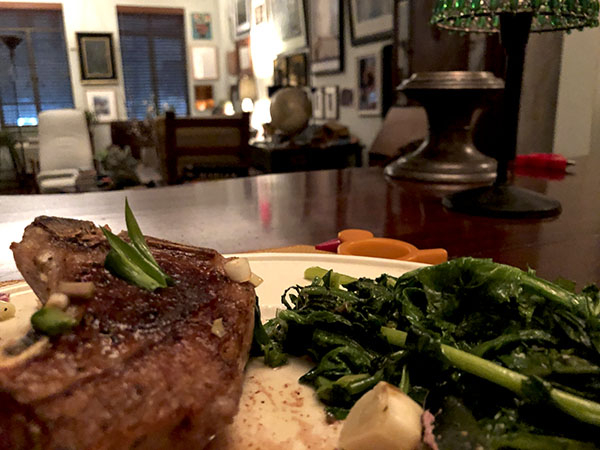
- *four thick really, really good 6-ounce rib lamb chops purchased from Greg and Mike at the Sun Fed Beef/ Maple Avenue Farms stand in the Union Square Greenmarket, brought to room temperature, dried well, cooked on a very hot enameled cast iron grill pan for around 12 minutes, turned over twice, seasoned with sea salt and freshly-ground black pepper after the first time, finished with a squeeze of juice from an organic lemon from Whole Foods Market, then scattered with the chopped bulbs and sliced leaves of an ounce and a half of young ramps from Lucky Dog Organic Farm, and drizzled with a little olive oil
- sunflower sprouts from Windfall Farms

- purple-topped turnips from Norwich Meadows Farm, washed, scrubbed, peeled, cut into half-inch-thick slices, tossed with Whole Foods Market house Portuguese olive oil, sea salt, freshly-ground black pepper, plus a handful of rosemary leaves from Stokes Farm and 3 broken bay leaves from Westside Market, roasted in a large unglazed Pampered Chef ceramic pan for about 30 or 35 minutes at 425º, or until tender and beginning to carbonize (note: I don’t really have to turn them over when using this miracle oven pan, but I did this time, encouraging some crispy edges)

- green kale from Norwich Meadows Farm, sautéed, or wilted, in a tablespoon of olive oil in which 2 of Keith’s Farm Rocambole garlic cloves had first been allowed to sweat and begin to brown, seasoned with sea salt, freshly-ground black pepper, and a dash of more olive oil
- *the wine was a spectacular Italian (Umbria) red, Adanti Sagrantino di Montefalco 2006, from Garnet Wines
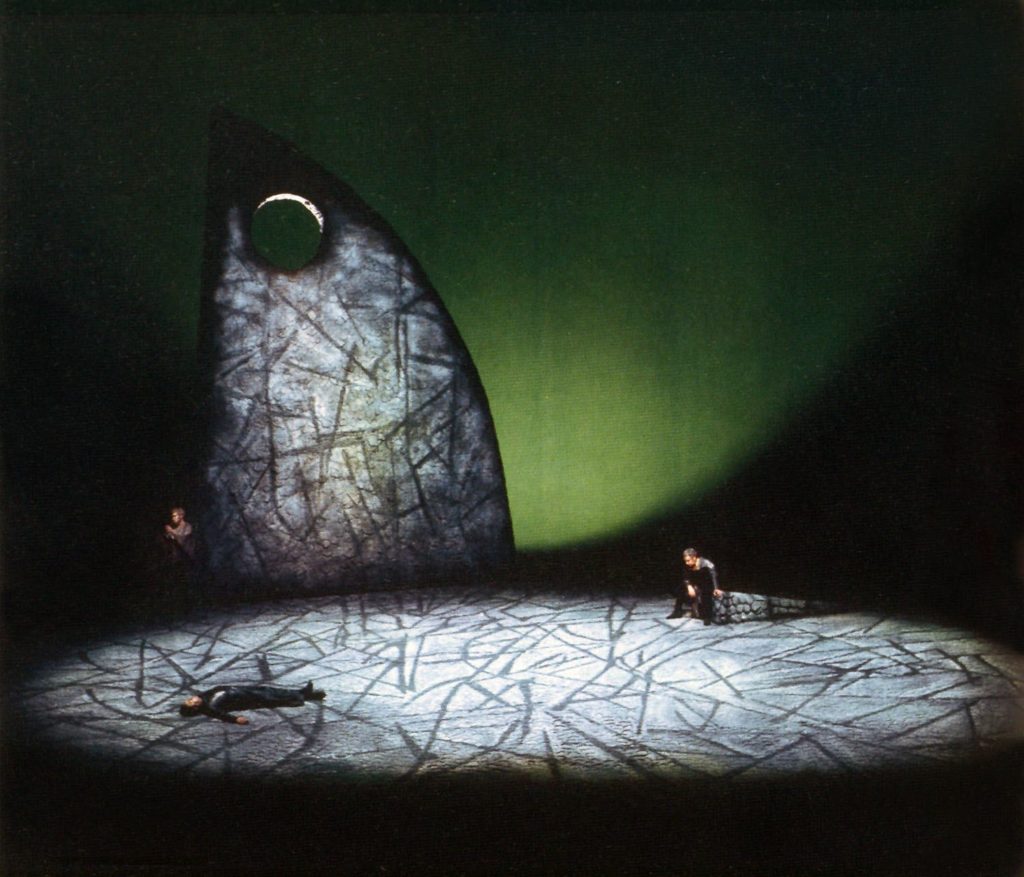
There was also an opera ice.
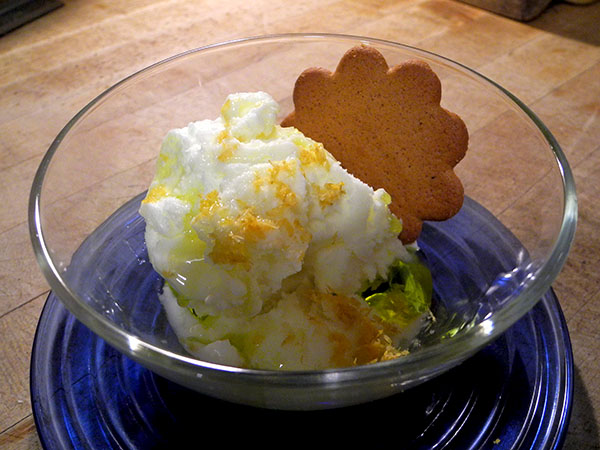
- a ‘Lemon Zest’ sorbet made by Vermont’s Blue Moon Sorbet, from Foragers Market, drizzled with Frankies 457 Sicilian olive oil, the gift of a friend, a bit of Maldon salt, and some zest from an organic Whole Foods Market lemon, garnished with one of Anna’s Ginger Swedish Thins
[image from inside a red/white/gold box at the Vienna State Opera from Trip Advisor; the bottom image, a still from the 3rd act of Wieland Wagner’s ‘Tristan’, the production we listened to, from Michael Erlebach’s Pinterest]

